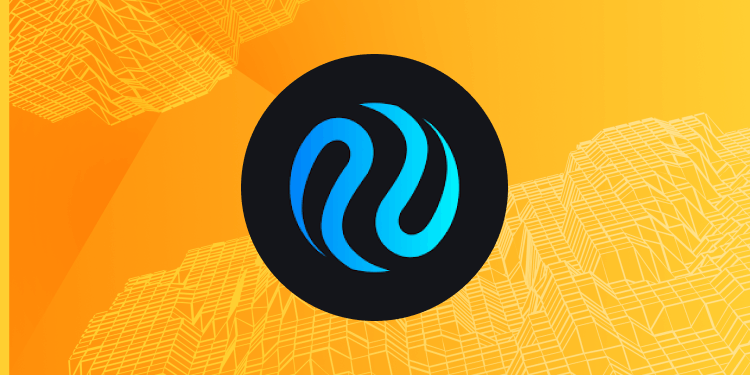Review Date: 12/02/2023
Decentralized exchanges (DEXs) are a vital component of the cryptocurrency ecosystem, as they enable users to trade without the need for intermediaries. However, the inefficiencies of DEXs have been a major hindrance to their adoption. Loopring, a scalable DEX protocol built on Ethereum, seeks to address these inefficiencies through a hybrid approach.
Loopring enables the building of high-performance, orderbook-based DEXs that do not take custody of users’ crypto-assets. The protocol is built with zkRollup, making it probably the first DEX protocol in the domain. Loopring aims to maintain the benefits of decentralized exchanges while lowering or eliminating their inefficiencies through hybrid solutions.
Loopring Exchange is the first decentralized trading platform built on top of the Loopring protocol. The protocol aims to improve order execution efficiency and DEX liquidity by managing the orders in a centralized manner but settling the trade on the blockchain. The result is a high-performance trading experience similar to centralized exchanges.
Loopring is capable of settling more than 2,000 trades per second on Ethereum. This high throughput is achieved through the use of zkRollup, a layer 2 scaling solution that aggregates multiple transactions into a single transaction on the Ethereum blockchain.
Another prominent feature that Loopring seeks to offer is low transaction cost. The majority of operations, such as trade and transfer settlement, are executed off the Ethereum blockchain, considerably reducing gas usage and overall transaction cost. Loopring intends to make trading accessible to everyone, regardless of their financial means.
Loopring Exchange provides an API to handle user off-chain requests, including order submission and cancellation and withdrawals. Other user requests, such as account registration, password reset, and deposits, must be submitted using Ethereum transactions. These requests are called on-chain requests.
Loopring uses Ethereum as a data availability layer and a zero-knowledge proof (ZKP) verification layer. It does not perform trading related computations on Ethereum, which is the primary reason why it is so efficient. By separating data availability and computation, Loopring achieves high throughput and low cost while maintaining security.
Notes to Take:
- Loopring is a DEX protocol on Ethereum that enables high-performance, non-custodial trading.
- Loopring Exchange is the first DEX built on Loopring, combining centralized order management with on-chain settlement.
- Loopring uses zkRollup to settle more than 2,000 trades per second on Ethereum.
- The majority of operations happen off-chain, leading to low transaction costs.
- Loopring offers an API for off-chain requests and uses Ethereum as a data layer and ZKP for verification.
- Loopring achieves efficiency by separating data availability and computation.
- Loopring provides a high-performance trading experience similar to centralized exchanges.
- The protocol seeks to make trading accessible to everyone, regardless of their financial means.
| Initial Screening | |||
| Keep researching | |||
| Does this project need to use blockchain technology? | Yes | ||
| Can this project be realized? | Yes | ||
| Is there a viable use case for this project? | Yes | ||
| Is the project protected from commonly known attacks? | Yes | ||
| Are there no careless errors in the whitepaper? | Yes | ||
Project Technology Score | |||
| Description | Scorecard | ||
| Innovation (Out Of 11) | 9 | ||
| How have similar projects performed? | Good | 2 | |
| Are there too many innovations? | Regular | 2 | |
| Percentage of crypto users that will use the project? | 6-10% | 3 | |
| Is the project unique? | Yes | 2 | |
| Architecture (Out of 12) | 9 | ||
| Overall feeling after reading whitepaper? | Good | 2 | |
| Resistance to possible attacks? | Good | 2 | |
| Complexity of the architecture? | Easy | 2 | |
| Time taken to understand the architecture? | 20-50 minute | 1 | |
| Overall feeling about the architecture after deeper research? | Medium | 2 | |
| Code Quality (out of 15) | 13 | ||
| Is the project open source? | Yes | 2 | |
| Does the project use good code like C,C++, Rust, Erlang, Ruby, etc? | Yes | 2 | |
| Could the project use better programming languages? | No | 0 | |
| Github number of lines? | More than 10K | 1 | |
| Github commits per month? | More than 10 | 2 | |
| What is the quality of the code? | Good | 2 | |
| How well is the code commented? | Outstanding | 2 | |
| Overall quality of the test coverage? | Good | 1 | |
| Overall quality of the maintainability index? | Good | 1 | |
| When Mainnet (out of 5) | 5 | ||
| When does the mainnet come out? | Live | 5 | |
| Usability for Infrastructure Projects (out of 5) | 5 | ||
| Is it easy to use for the end customer? | Yes | 5 | |
| Team (out of 7) | 6 | ||
| Number of active developers? | 5+ | 2 | |
| Developers average Git Background? | Senior | 2 | |
| Developers coding style? | Solid | 2 | |
| Total Score (out of 55) | 47 | ||
| Percentage Score | |||
| Innovation | 16.36% | ||
| Architecture | 16.36% | ||
| Code Quality | 23.64% | ||
| Mainnet | 9.09% | ||
| Usability | 9.09% | ||
| Team | 10.91% | ||
| Total | 85.45% |





